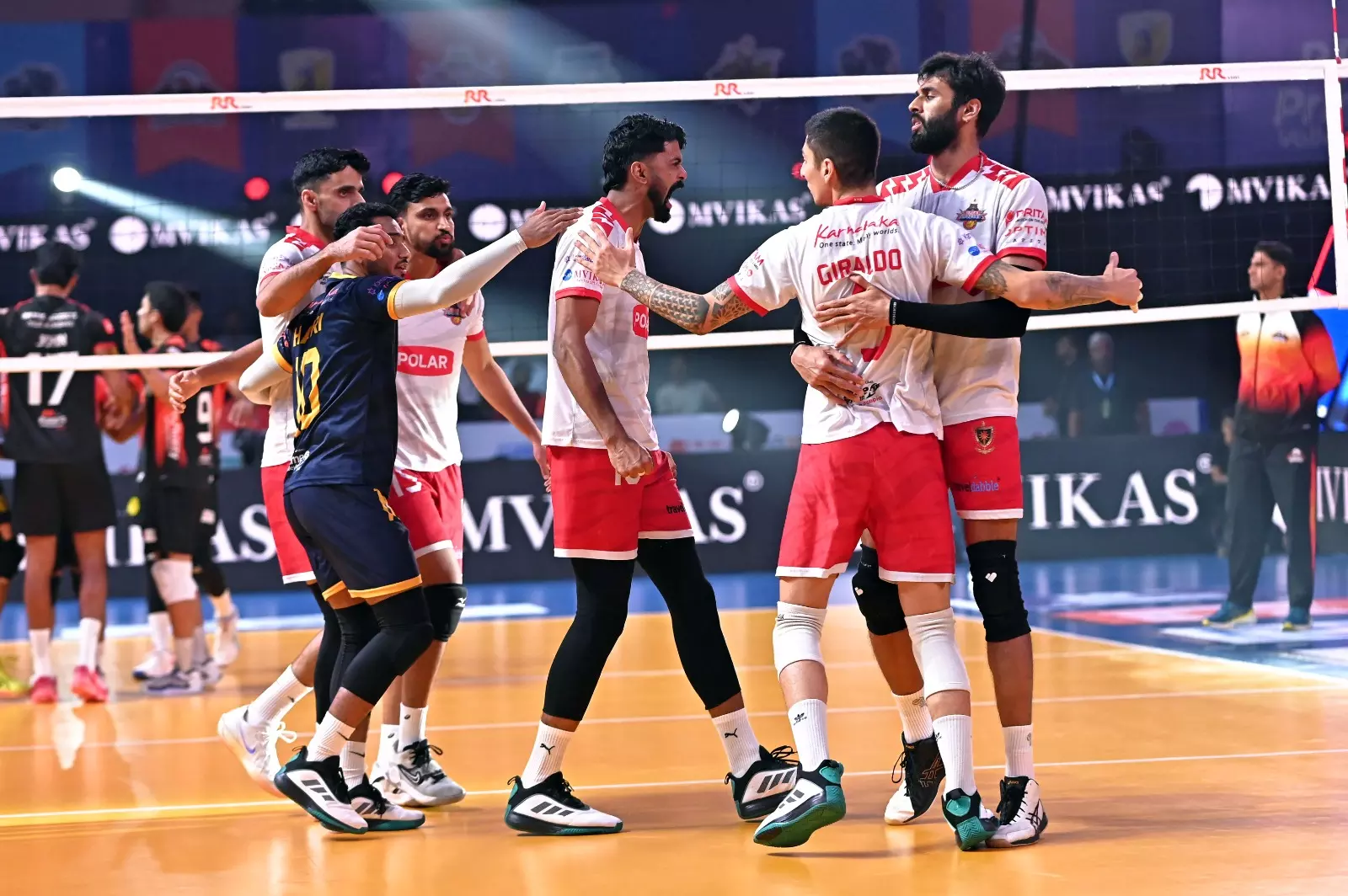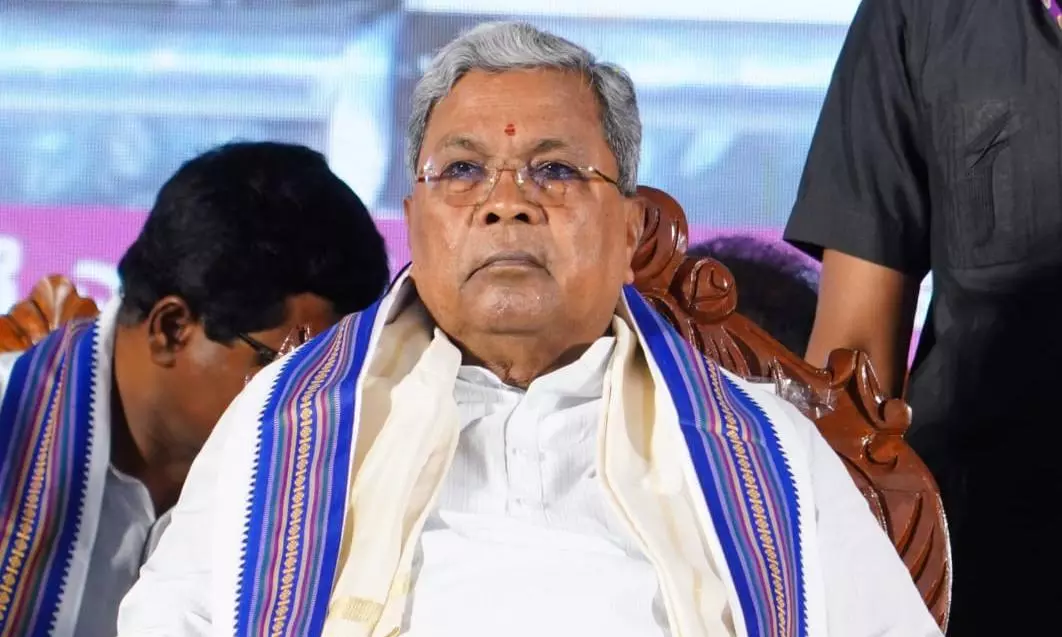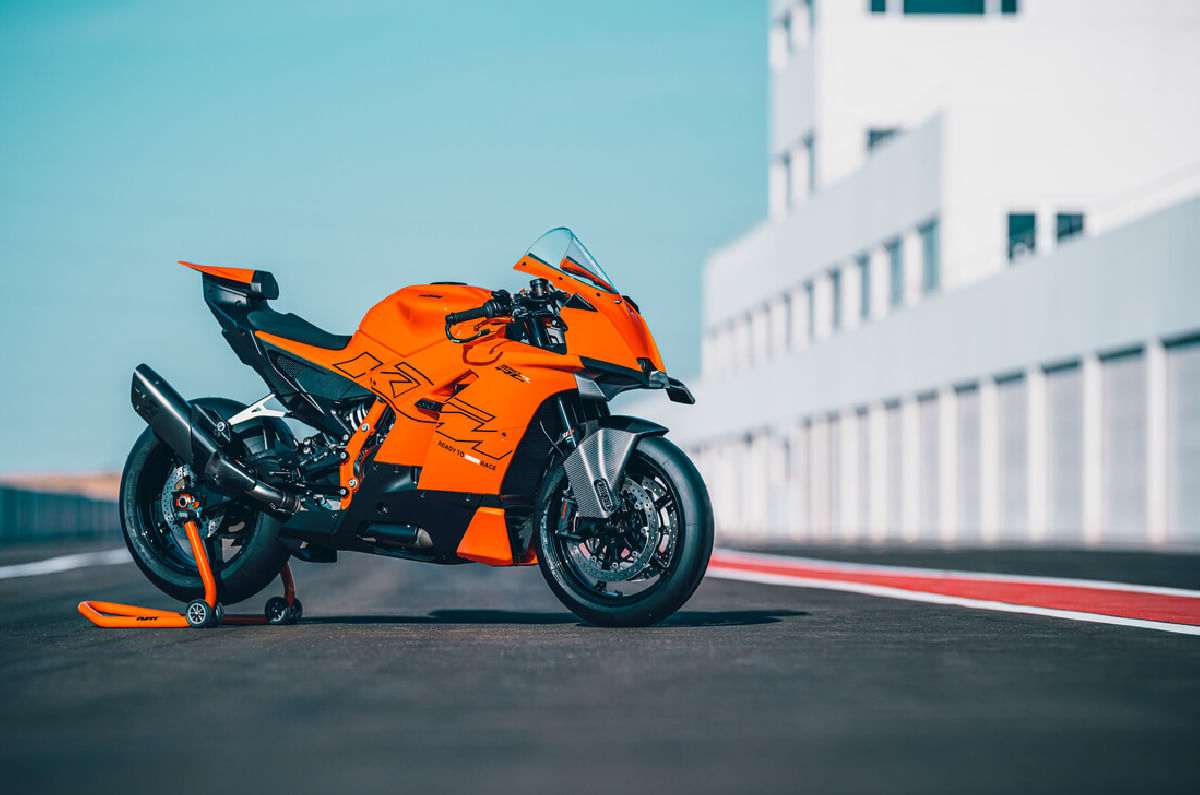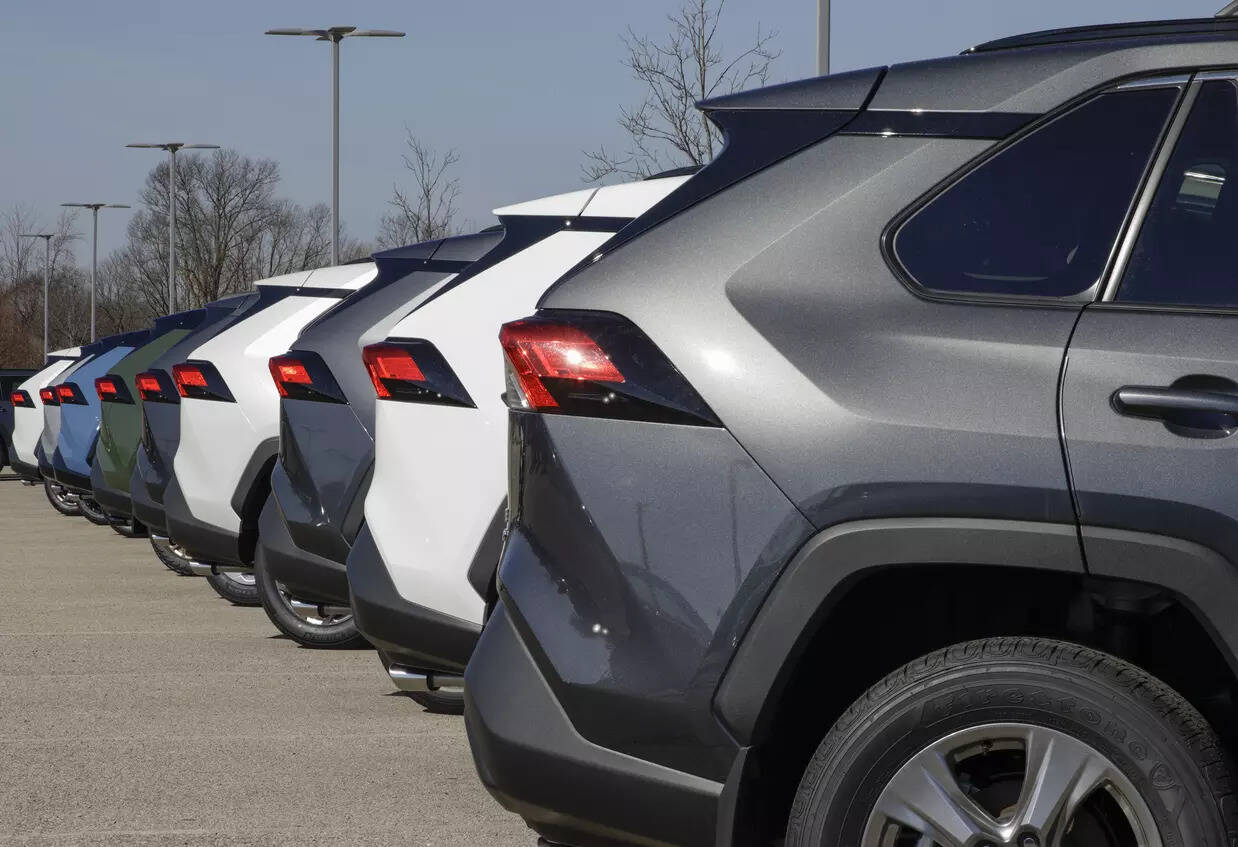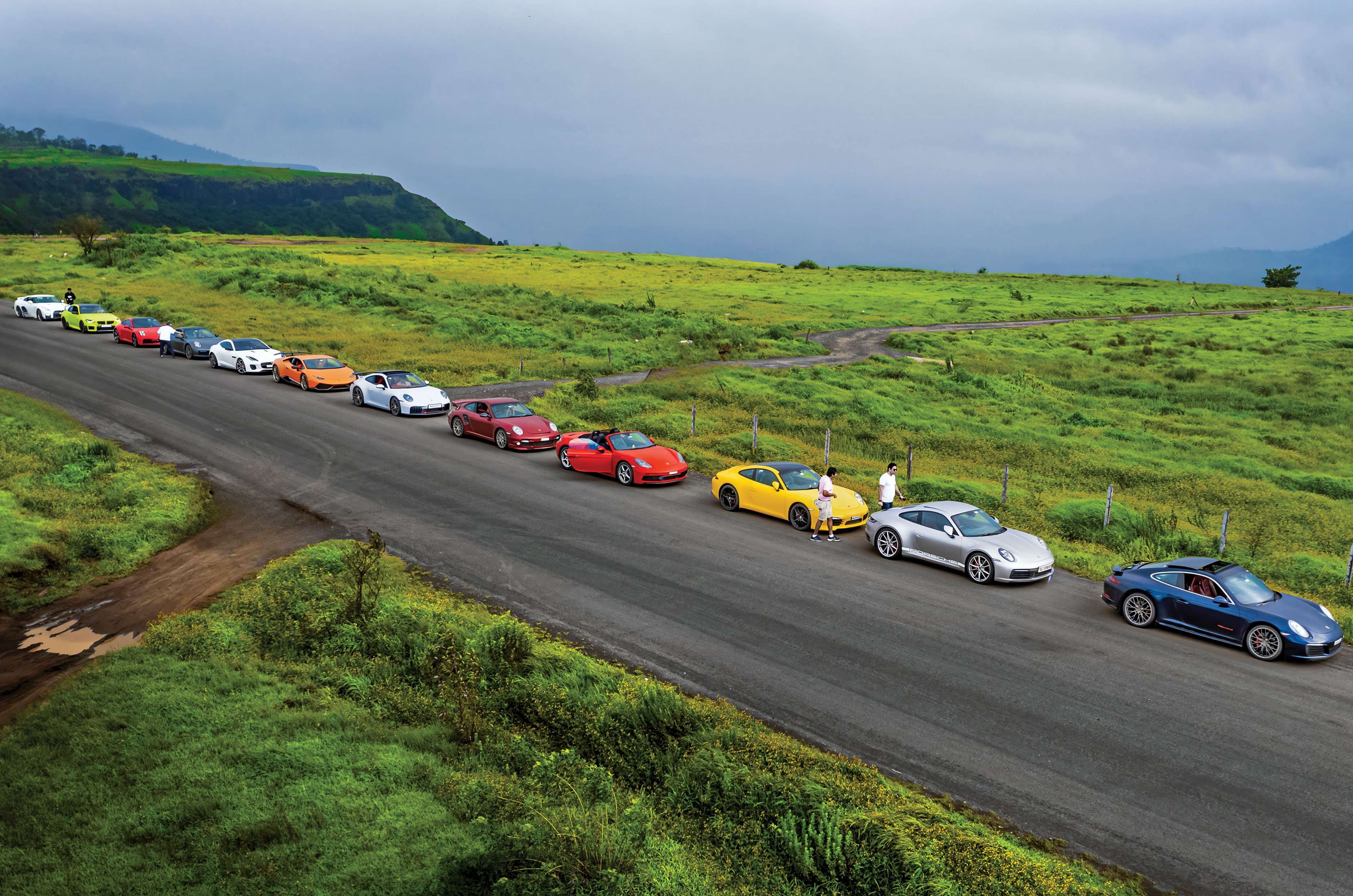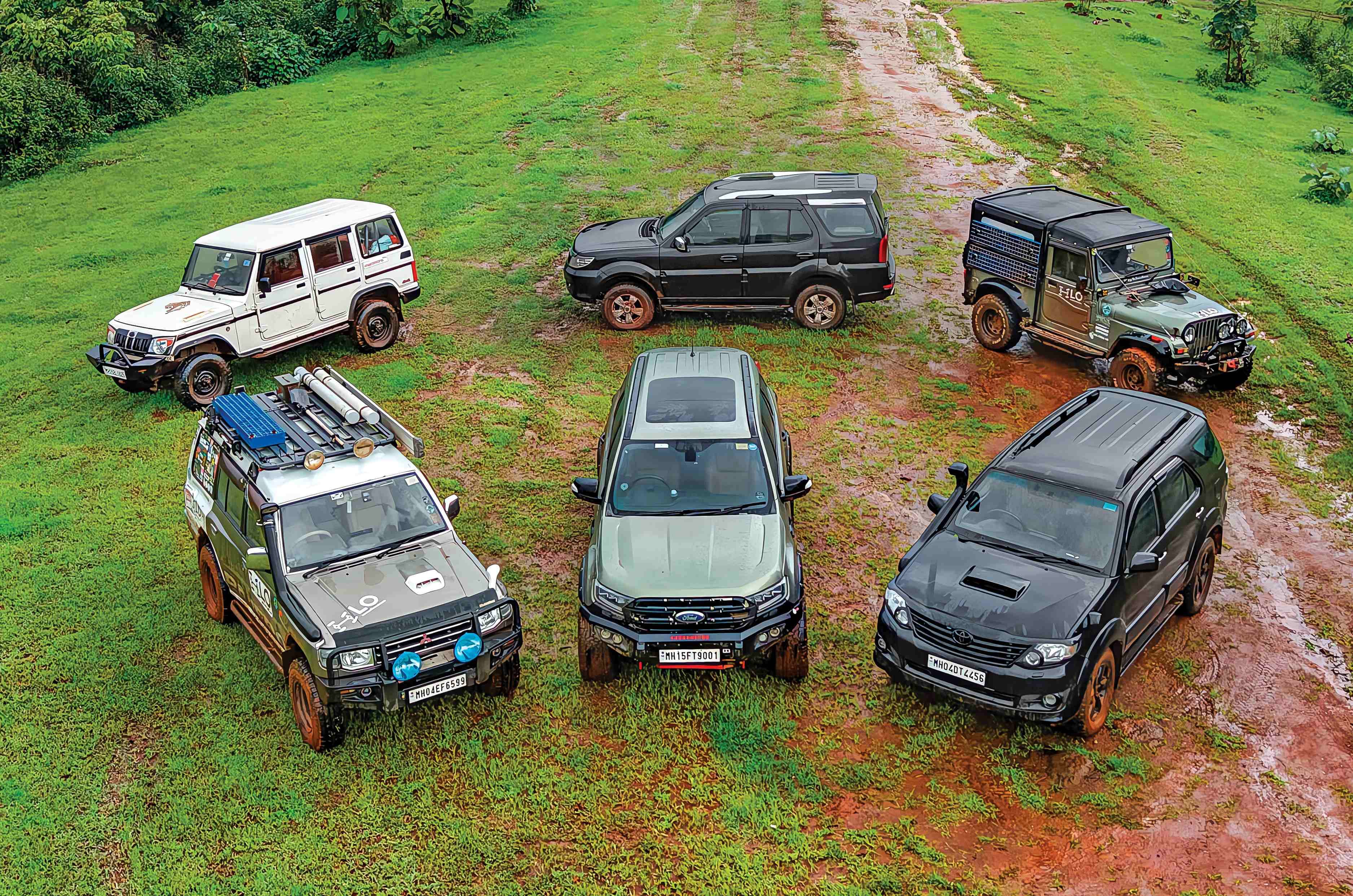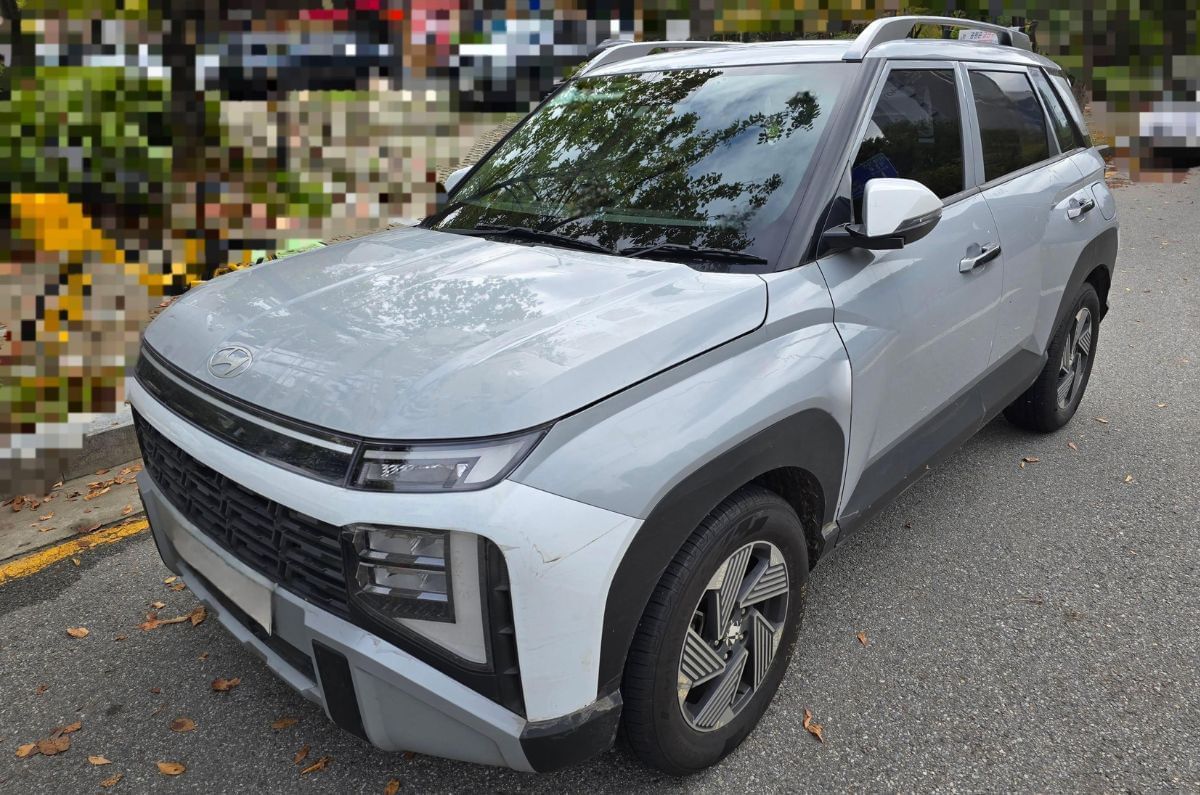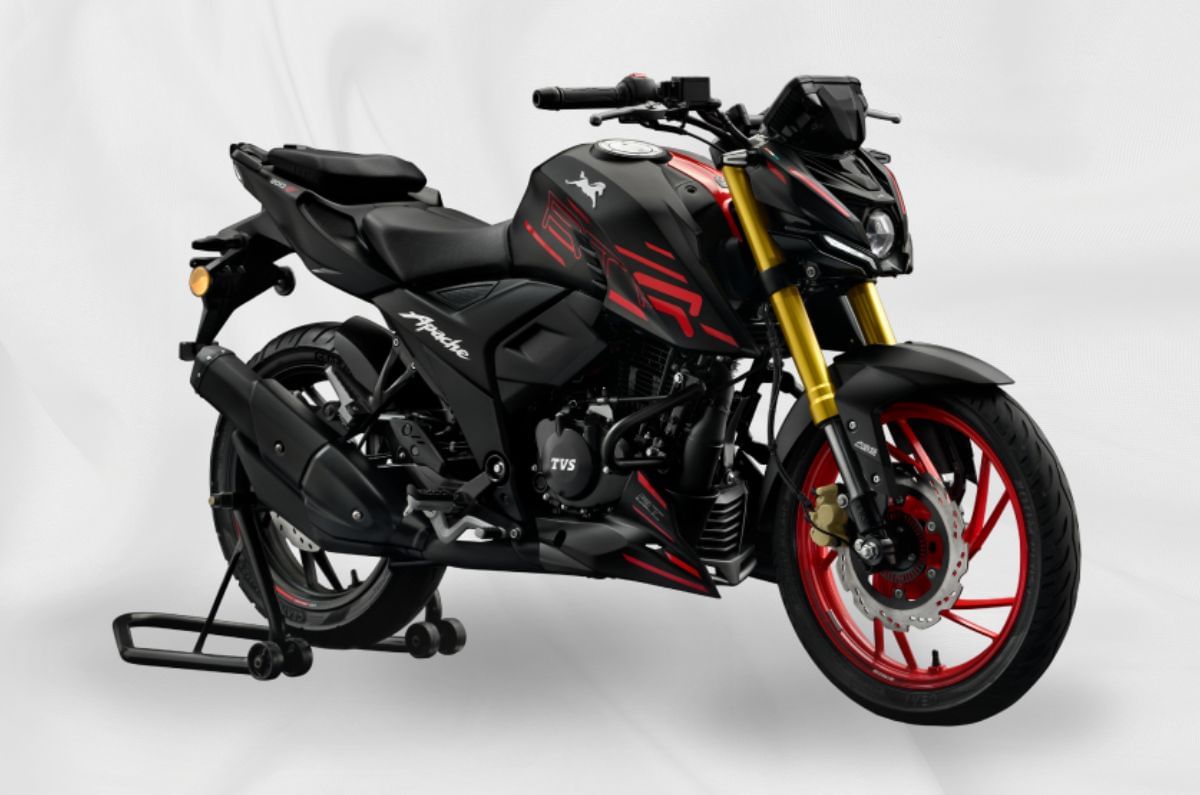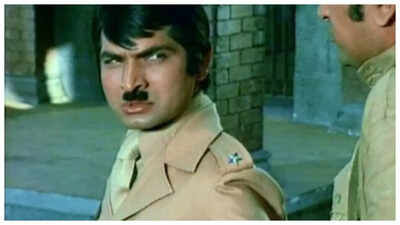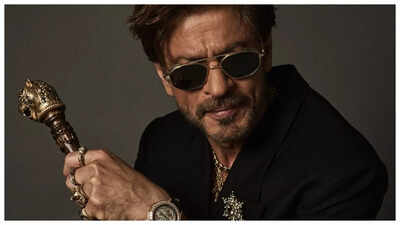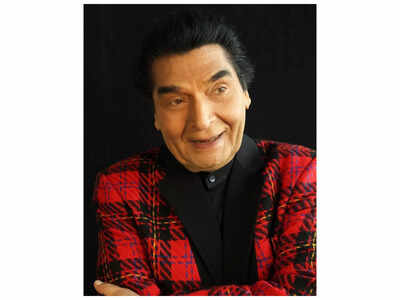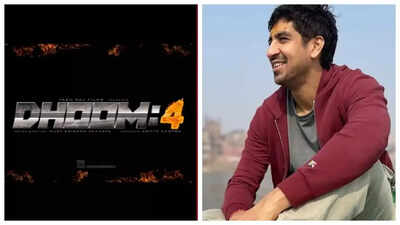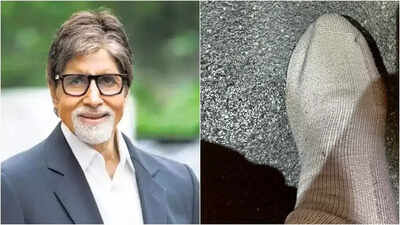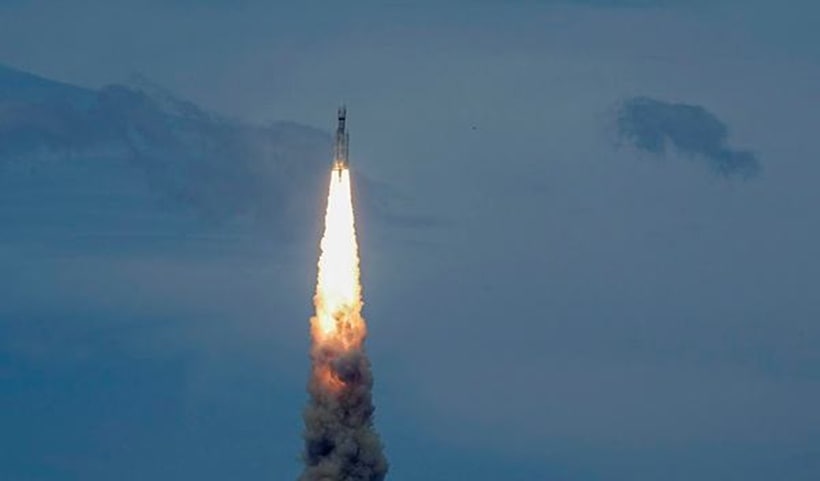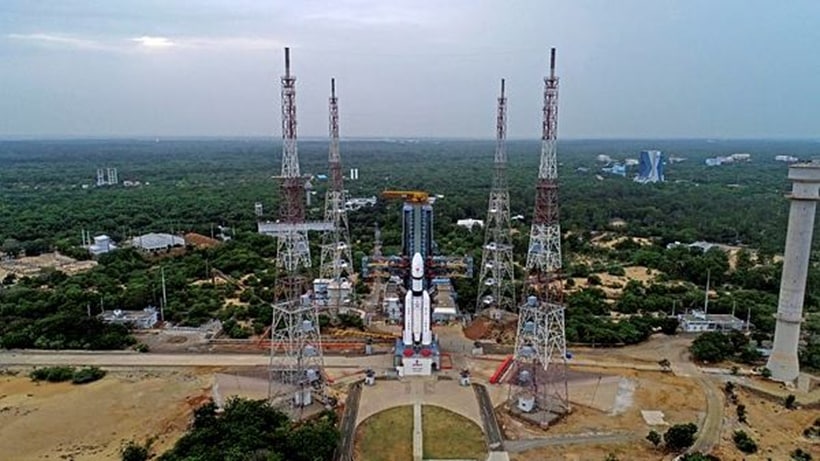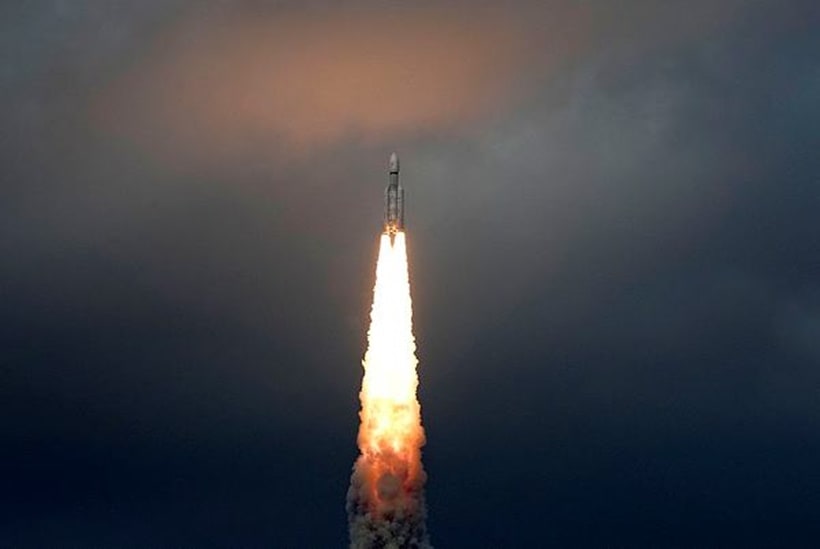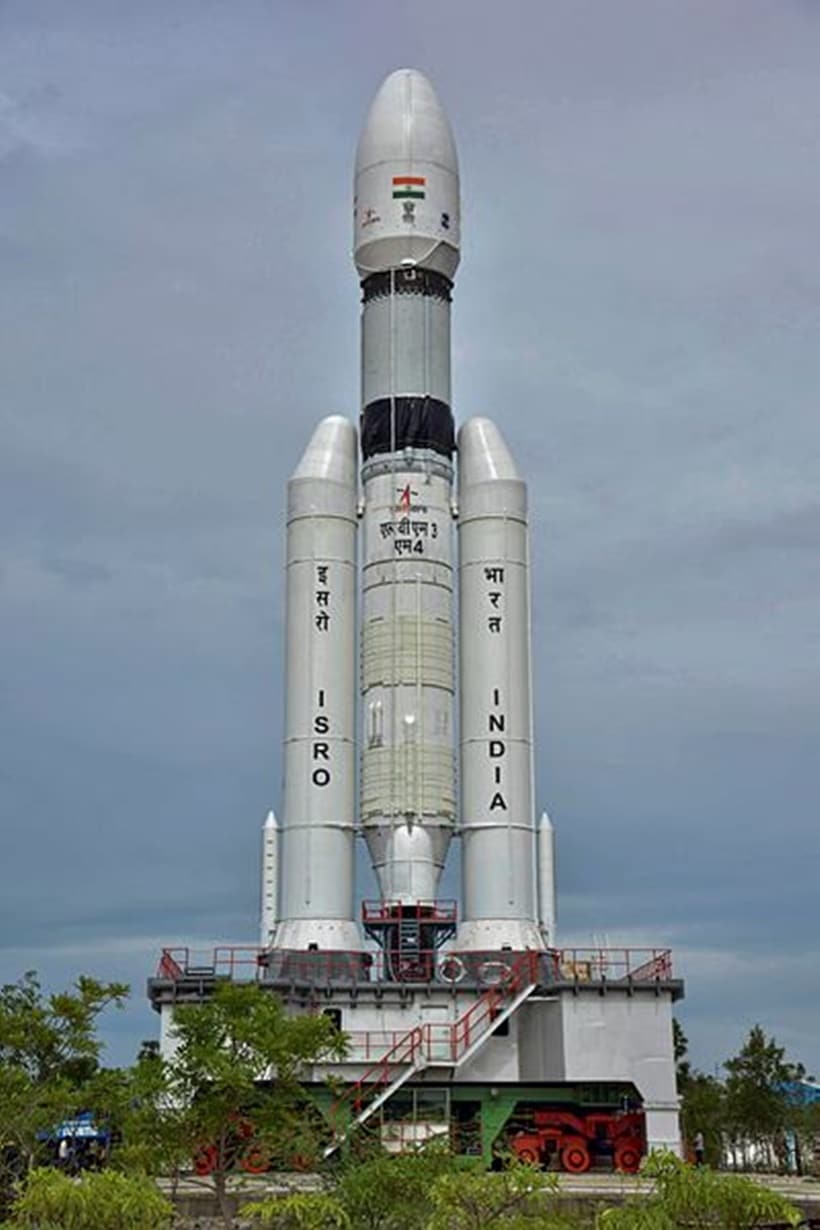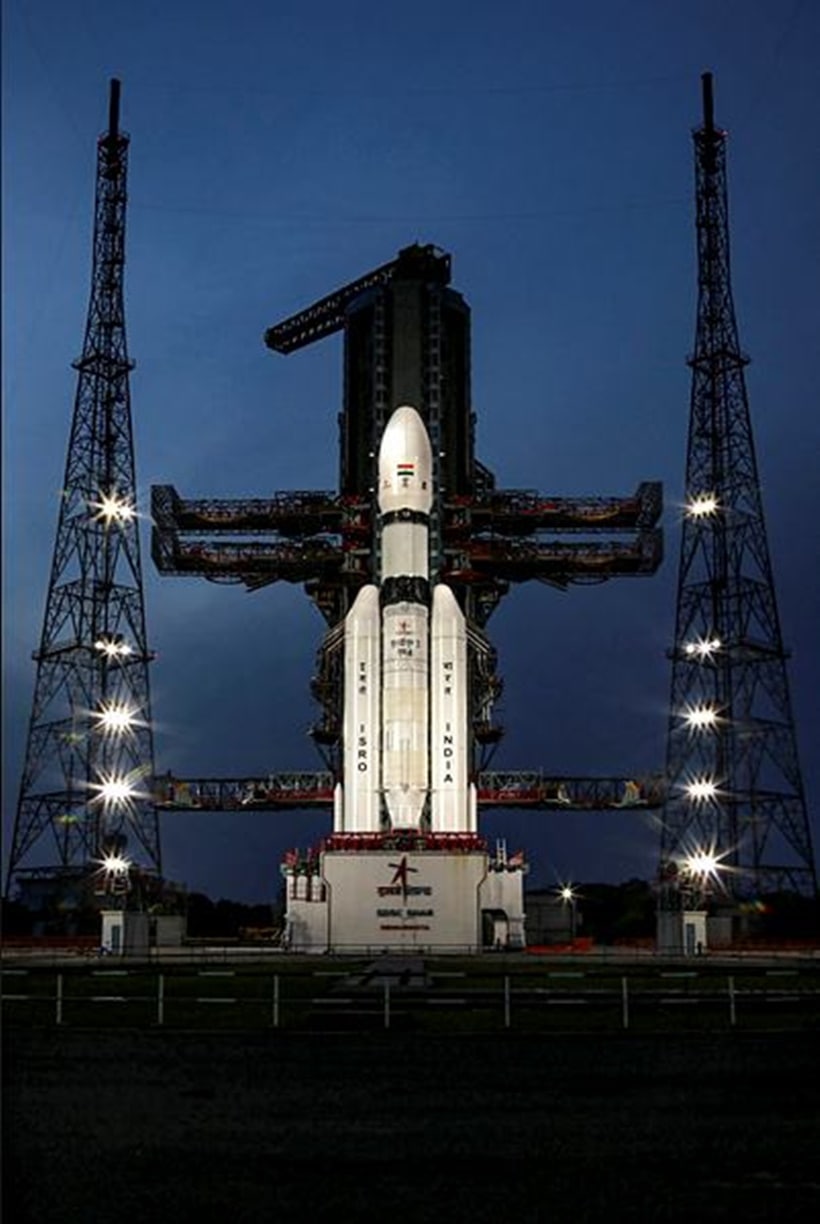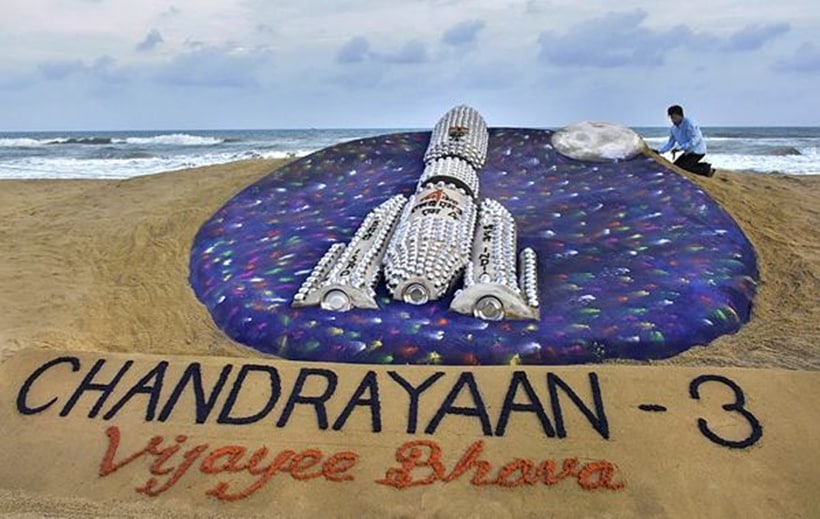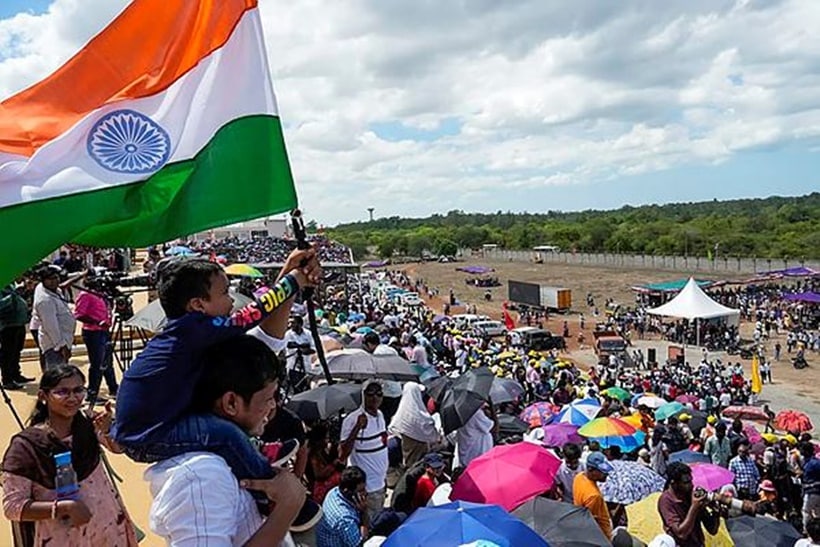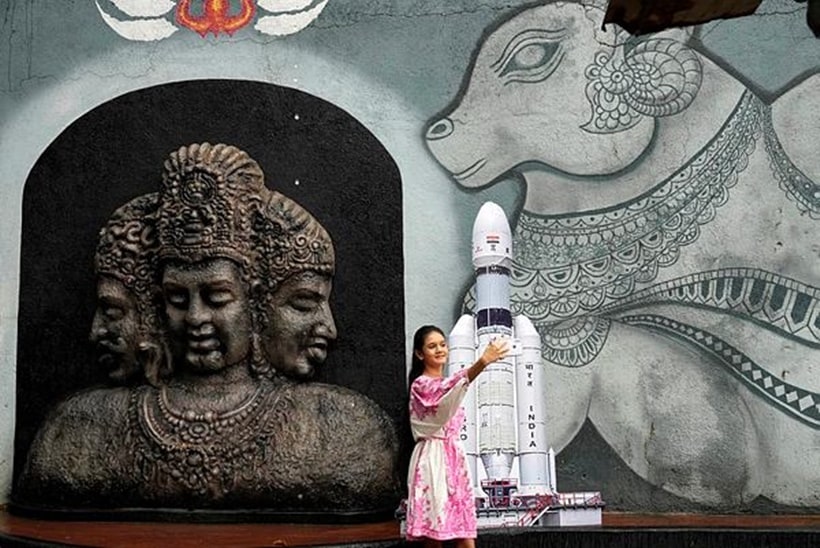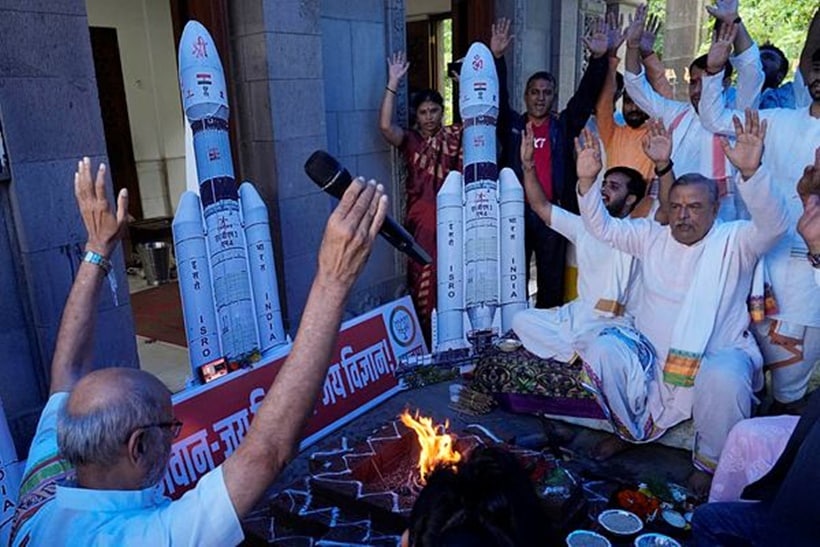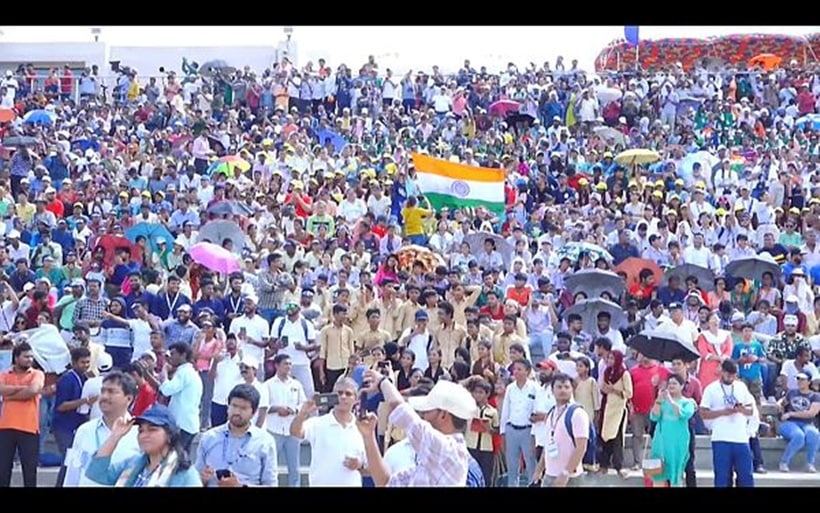The Indian Space Research Organisation (ISRO) on Friday took the first step towards a possible robotic soft landing on the surface of the moon on August 23 with the near perfect launch of the Chandrayaan 3 spacecraft into an orbit around the earth by the heavy lift LVM3 rocket from the Satish Dhawan Space Centre at Sriharikota in Andhra Pradesh.
The LVM3 rocket, carrying a payload of 3,895 kg, including the spacecraft, lifted off precisely at 14:35:17 hours and followed a trajectory that was more or less in line with the scheduled stages in the launch of the Chandrayaan-3.
“Cryo stage thrust cut off. Satellite injection conditions are achieved,” said the announcer at the mission control complex at the space station in the final stage of the launch, which lasted around 16 minutes.
The Chandrayaan 3 satellite separated from the rocket after 965 seconds – against an intended 969 seconds – of flight as per the mission control data transmitted for viewing at the mission complex. “The Chandrayaan 3 has been placed in its elliptical parking orbit,” the announcer said.
 The LVM3 rocket, carrying a payload of 3,895 kg, including the spacecraft, lifted off precisely at 14:35:17 hours. (PTI)
The LVM3 rocket, carrying a payload of 3,895 kg, including the spacecraft, lifted off precisely at 14:35:17 hours. (PTI)
Soon after the announcement, mission director S Mohana Kumar announced the success of the mission. “This is the mission director. The LVM3/Chandrayaan mission accomplished its precise satellite injection conditions. LVM3-M4 mission is successful,” he announced as ISRO Chairman S Somanath pumped the hands of top scientists associated with the launch.
“Congratulations India. Chandrayaan 3 has started its journey towards the moon. Our dear LVM3 has already put Chandrayaan 3 into a precise orbit around earth. The intended orbit was 170 km by 36,500 km around earth and it is precisely there now. Let us wish all the best to the Chandrayaan 3 craft to make all the orbit raising maneuvers and travel towards the moon in the coming days,” the ISRO Chairman announced.
 ISRO’s Launch Vehicle Mark-III (LVM3) M4 rocket carrying ‘Chandrayaan-3’ lifts off. (PTI photo)
ISRO’s Launch Vehicle Mark-III (LVM3) M4 rocket carrying ‘Chandrayaan-3’ lifts off. (PTI photo)
President Droupadi Murmu congratulated the ISRO scientists on the successful launch. “India successfully launches Chandrayaan-3 marking another significant milestone in space exploration. Heartiest congratulations to the @ISRO team and everyone who worked relentlessly to accomplish the feat! It demonstrates the nation’s unwavering commitment to advancement in space science and technology. My best wishes for the success of the lunar mission,” she said in a Twitter post.
Prime Minister Narendra Modi in a Twitter post said: “Chandrayaan-3 scripts a new chapter in India’s space odyssey. It soars high, elevating the dreams and ambitions of every Indian. This momentous achievement is a testament to our scientists’ relentless dedication. I salute their spirit and ingenuity!”
 A successful mission this time would mean entry of India into a small club of nations who have achieved the feat, the previous three being US, China and the former Soviet Union.
A successful mission this time would mean entry of India into a small club of nations who have achieved the feat, the previous three being US, China and the former Soviet Union.
With the Chandrayaan-3 placed in an elliptical orbit around the earth, the spacecraft will over the next two weeks undergo orbit raising maneuvers to obtain a trajectory where it can be transferred into the orbit of the moon on August 1. Subsequently, the lander of the spacecraft will undergo a separation from its propulsion module and will gradually reduce its orbital distance around the moon to 100 km from where the lander will make a powered descent to the surface of the moon on August 23.
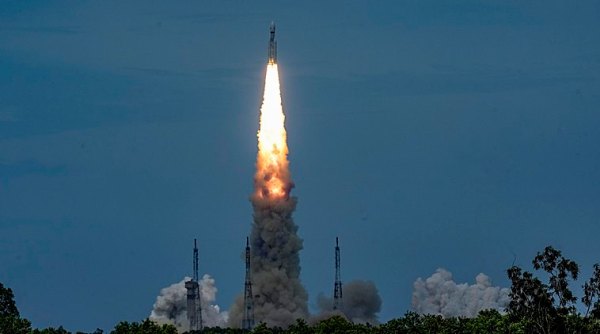 The launch on Friday was the third successful flight of the LVM3 in 2023 and the seventh successive mission where it has delivered, including five operational missions. (PTI)
The launch on Friday was the third successful flight of the LVM3 in 2023 and the seventh successive mission where it has delivered, including five operational missions. (PTI)
During the Chandrayaan 2 mission, the powered descent phase had failed in the final stages – on September 7, 2019.
A successful mission this time would mean entry of India into a small club of nations who have achieved the feat, the previous three being US, China and the former Soviet Union.
Project director for Chandrayaan 3 spacecraft P Veeramuthuvel described Friday’s launch as close to perfect. “Very happy to note that our Chandrayaan 3 has achieved the intended orbit with very close orbital parameters. All our spacecraft parameters are normal, including the power generation and in the propulsion modules and lander module,” Veeramuthuvel said.
“Our journey to the moon has begun now for the most awaited soft landing. We will be closely monitoring and controlling the spacecraft from ISTRAC Bengaluru,” he said.
“Many critical maneuvers are lined up starting with the earthbound maneuvers and insertion of the satellite into the lunar orbit and separation of the lander from the propulsion module and set of deboost maneuvers and finally the powered descent phase for soft landing,” the project director for the next phase of the mission said.
 Union MoS (Ind. Charge) for Science & Technology and Atomic Energy & Space Jitendra Singh with ISRO Chairman S. Somanath and other scientists poses for photos during a press conference after the successful launch of ISRO’s Mark-III (LVM3) M4 rocket carrying ‘Chandrayaan-3’ from the launch pad at Satish Dhawan Space Centre, in Sriharikota, Friday. (PTI Photo)
Union MoS (Ind. Charge) for Science & Technology and Atomic Energy & Space Jitendra Singh with ISRO Chairman S. Somanath and other scientists poses for photos during a press conference after the successful launch of ISRO’s Mark-III (LVM3) M4 rocket carrying ‘Chandrayaan-3’ from the launch pad at Satish Dhawan Space Centre, in Sriharikota, Friday. (PTI Photo)
ISRO Chairman Somanath said that the translunar injection of Chandrayaan 3 will be carried out on August 1 with a proposed soft landing on August 23. “We will have earthbound maneuvers and after that it will have a lunar injection on August 1 and after that it will be captured by the moon orbit and propulsion mode separation will happen on August 17. Final powered descent and landing is planned on August 23 at 5.47 pm IST in the evening. This is the schedule if everything goes according to the plan,” he said.
“Once again the fat boy has done its job,” said A Rajarajan, director for the Satish Dhawan Space Centre, referring to the LVM3 rocket, which is known for its heavylift capability.
The launch on Friday was the third successful flight of the LVM3 in 2023 and the seventh successive mission where it has delivered, including five operational missions.



